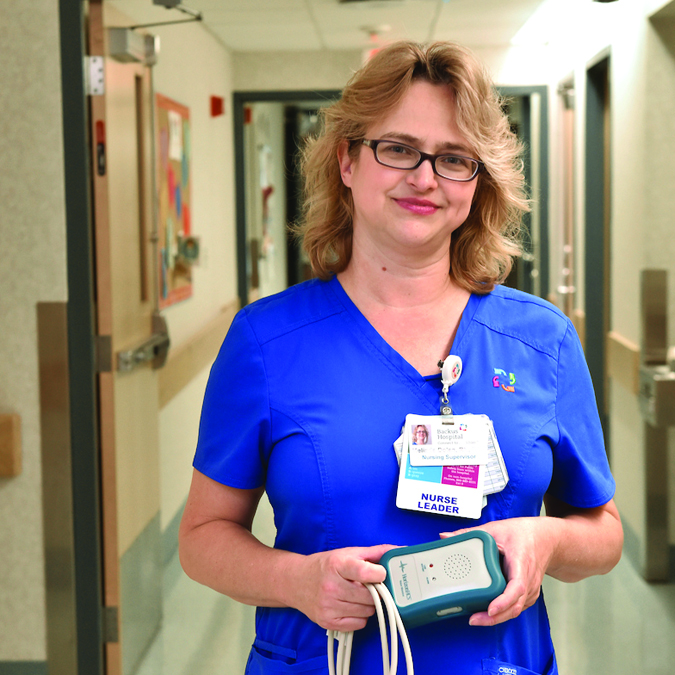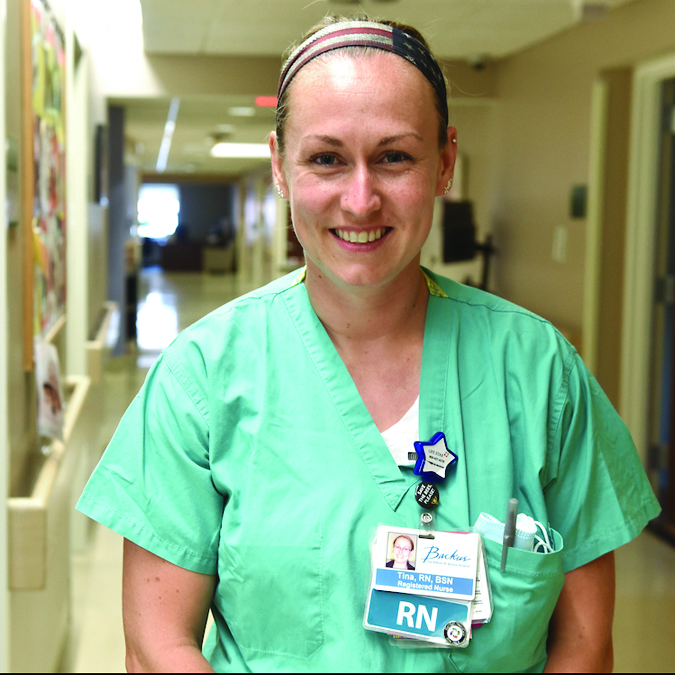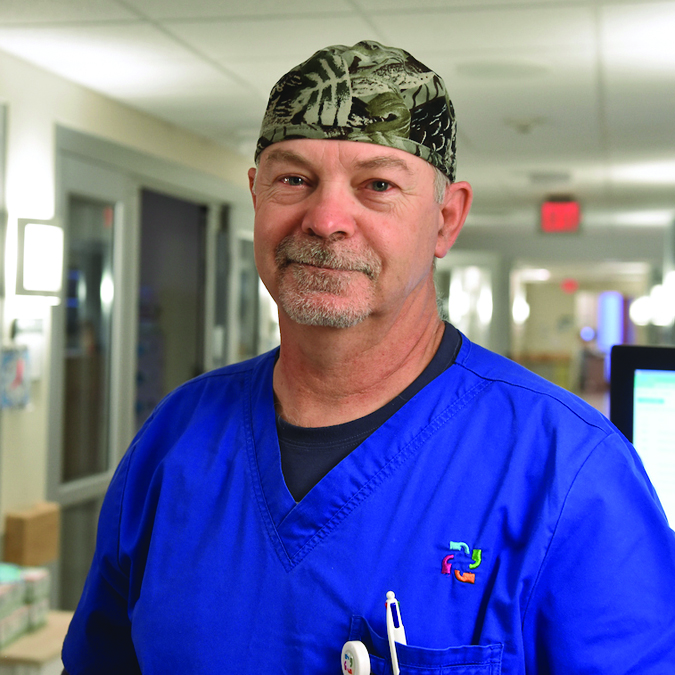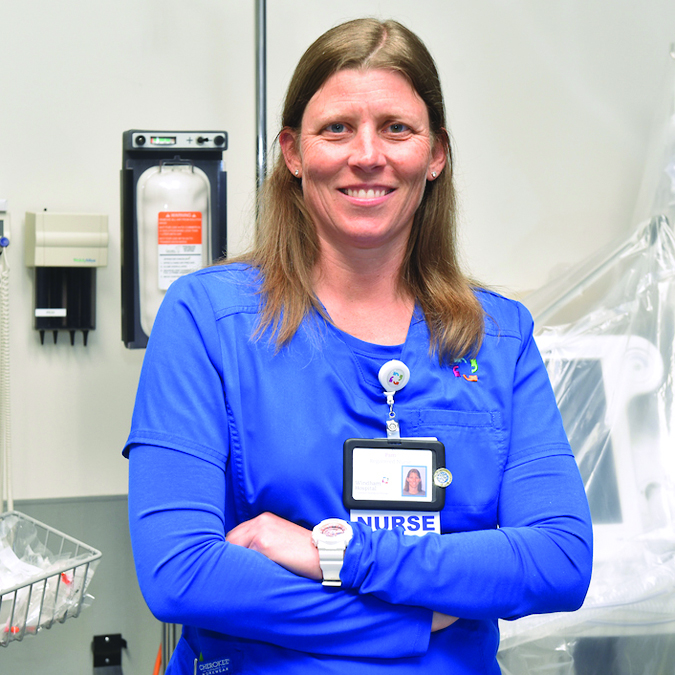Heroes Among Us
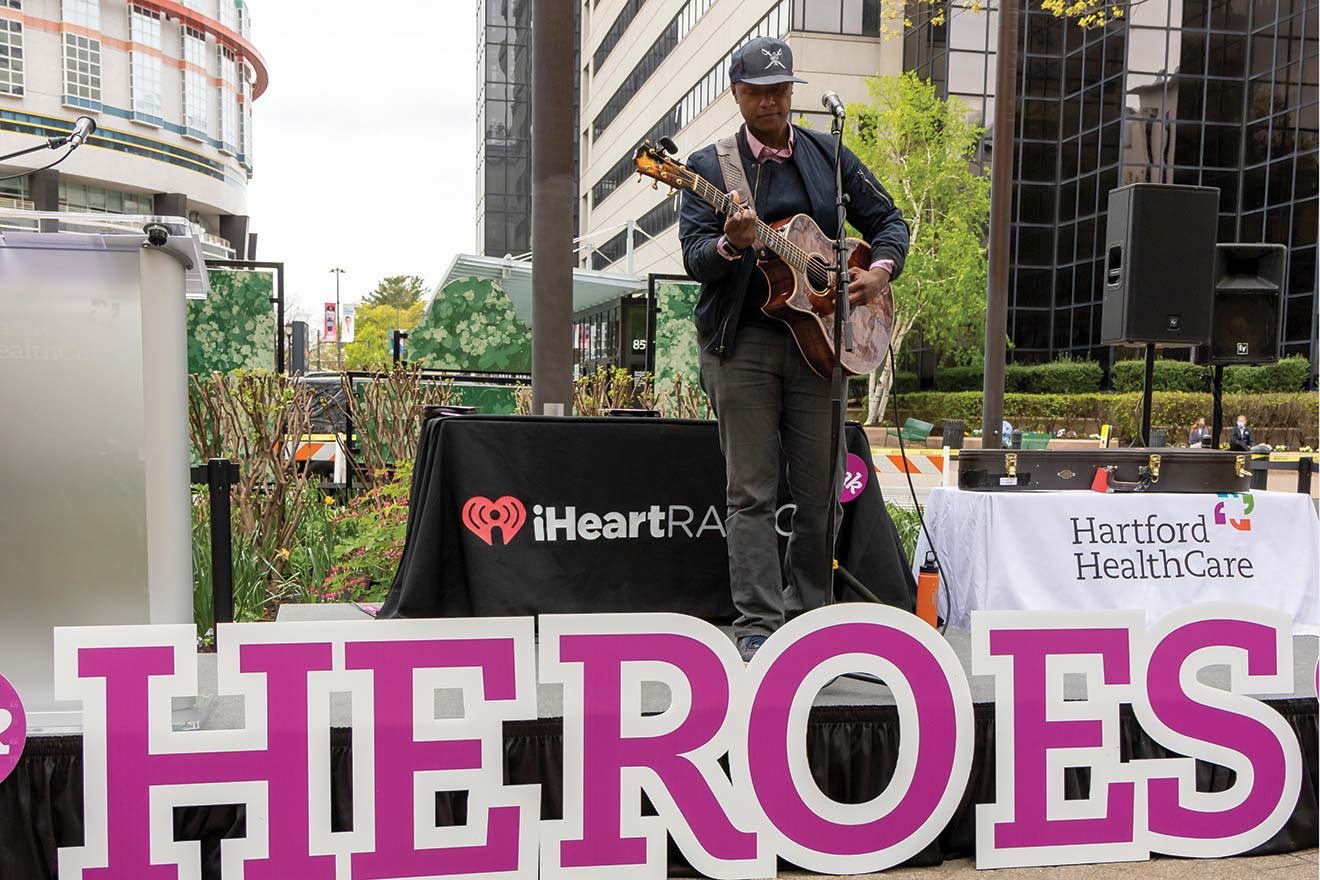
COVID heroes come in all forms at HHC
Not all heroes wear capes, as the world discovered during the first wave of the COVID-19 pandemic. Across Hartford HealthCare, heroes push mops and mop foreheads, they make phone calls and call codes, they hold hands and hand over test results. It was an incredible time to be in healthcare, but our heroes shone brighter than ever before. Here are some of their personal stories.
Staff attend a “pop up concert” by Hartford-native Javier Colon, while socially distanced on the front lawn at Hartford Hospital, in celebration of Nurses Week, during the COVID-19 pandemic.
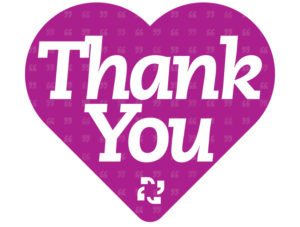
Dialing for PPE: Long nights on the phone kept providers and patients safe
By Hilary Waldman
In January 2020, there were no reported COVID-19 cases here, but the team keeping Hartford HealthCare stocked with supplies knew it was time to go shopping.
Watching reports from China, where a mysterious virus was exploding, HHC’s Supply Chain Management team felt it was a matter of time before coronavirus hit home and, as China locked down to contain the disease, factories providing medical supplies would close too. In preparation, they stockpiled masks, gloves, gowns and other supplies needed to keep colleagues safe in an outbreak.
As COVID-19 cases in Connecticut climbed, the scramble was on and the need for personal protective equipment (PPE) became critical.
Dan Pak, HHC’s vice president for Supply Chain Procure to Pay, was part of the team planning pandemic response by day. At night, he called or texted Chinese factory managers to ensure orders were not hijacked by higher bidders, working the phones into the pre-dawn hours.
One night, Pak called to check on an order of 200,000 masks and learned they were sold to another buyer offering more money. Price gouging drove up the cost of critical items — N-95 masks, normally $1.50 each, were fetching up to $20, and procedure masks, typically 10 cents, were going for 10 times that.
Another risk, according to Milrose Mercado, HHC’s senior vice president for Supply Chain Management, was getting counterfeit or substandard products that could endanger providers.
As the Chinese products became harder to get, Mercado and Pak worked with suppliers in Vietnam, Korea and Malaysia. When hospitalizations began to decline, they focused on ensuring masks are available to all patients, visitors and colleagues entering HHC buildings and preparing for a projected resurgence in the fall.
“When it mattered most, [HHC’s systems] allowed us to make sure our colleagues, patients and communities were as protected as they could be,’’ said President and CEO Jeff Flaks.
Clean team sanitizes East Region
By Emily Perkins-Gravell
Will Gerjes has faith. It is his personal faith and faith in his family and team that help him do whatever he can to make the East Region safe for others.
Director of regional environmental services, Gerjes and his team are tasked with the critical job of keeping facilities clean and safe. When COVID-19 made its way east in Connecticut, they became a more important part of the frontline response than ever before.
They were tapped to rigorously clean high-touch areas, scour COVID-positive rooms and even find new and creative ways to rearrange waiting areas and break rooms so colleagues, patients and visitors can socially distance. They worked around the clock, donned added personal protective equipment and followed rapidly- changing protocols communicated almost daily.
“In the beginning, we were all scared and worried, but my team is engaged and committed to doing the right and the safe thing,” Gerjes said. When it was time to clean the first COVID- positive room, he said Yaitza Maldonado, environmental services manager for the region, told him tearfully that she wanted to clean the room because she didn’t want anyone on her team to have to be the first.
Veteran EVS colleague Roger Piper ran daily calls keeping the team and supplies organized throughout the region. He even packed his car full of supplies like hand sanitizer and disinfectant spray, delivering them to departments across the region.
Colleagues took turns coming in early to clean the EVS break room so others could find a safe respite.
“No matter what I asked them to do, the response was always ‘We’re on it’,” Gerjes said. “With a good team, you can accomplish anything.”
With three daughters at home, he admitted the first wave of COVID-19 was difficult. His faith and love notes his daughters left on his windshield helped him head into work, where he never knew what the day would bring.
Photo by Jeff Evans
Managing a flood of community good will
By Anne Rondepierre-Riczu
As the COVID-19 pandemic triggered a desperate need for personal protective equipment (PPE) nationwide, a rising tide of good will washed over St. Vincent’s Medical Center, providing PPE and many other things for frontline colleagues.
Lyn McCarthy, director of philanthropy for St. Vincent’s Foundation, was tapped to accept, manage and distribute donations throughout the facility and beyond, to other sites of care and testing stations.
“We were flying by the seat of our pants,” she recalled. “Everything happened so fast and there was not a process in place for this deluge of donations.”
With 13 years of experience helping to manage disaster relief the Red Cross, however, McCarthy was certainly up to the task.
“It started with gowns, masks and gloves. Never did we expect to be contending with public GoFundMe pages, food donations from restaurants and caterers across the region, and the safe creation and distribution of home-made masks.”
McCarthy and her team worked around the clock to ensure all donations were safe and fairly distributed.
“My donation spreadsheet was my bible,” she explained. “The first donations were to the ICU and COVID floors, but, over time, we made sure every department was fed, from environmental services and security to the lab, central supply, testing sites and beyond. All in all, we distributed approximately 12,000 meals, accommodating every shift.”
Distribution itself was a careful process with strict visitor restrictions in place. They had to be appropriately packaged and labeled by department, delivered to the hospital lobby, then retrieved by department staff. “I would have been up there with them if I could,” McCarthy said of frontline staff. “This is the one thing I could do to help with what they were going through. It was such a morale booster.
“The outpouring of love and support for our front line was truly remarkable. We are forever grateful.”
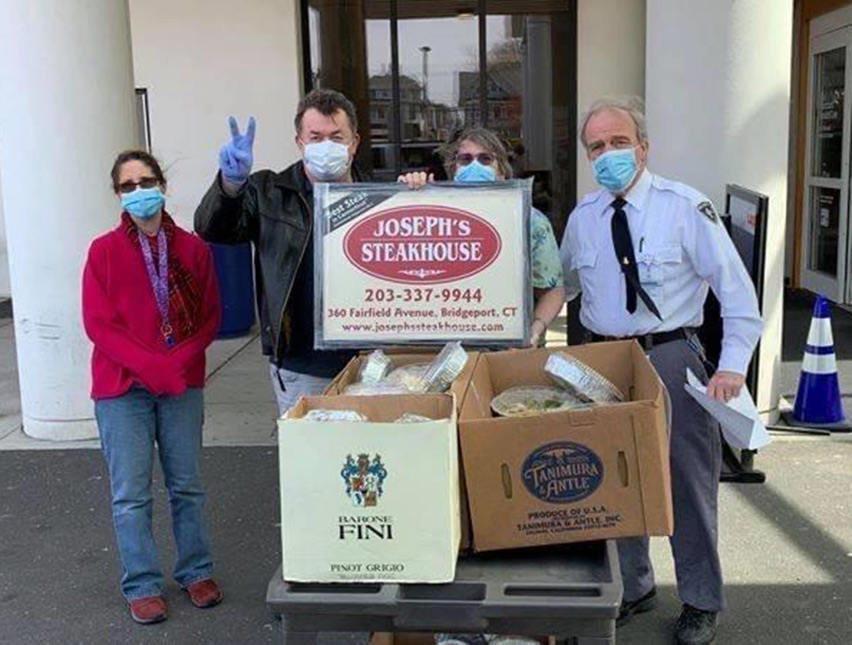
Photo by Danielle Swift: The SVMC security team received count-less deliveries of food for colleagues from local restaurants and caterers.
From East to West, nurses bring care on the road
By Emily Perkins-Gravell
In March, St. Vincent’s Medical Center (SVMC) was quickly filling with very sick COVID-19 patients.
“The census was bursting at the seams. We opened multiple ICU units and didn’t know how we were going to staff them,” said Sue Skoog, director of critical care and nurse manager of inpatient cardiology.
The hospital needed more than twice the nurses for the surge. Through the Hartford HealthCare Emergency Operations Center, resources from around the system — supplies, equipment and staff — were redeployed. The labor pool sent nurses, respiratory therapists and LIFE STAR team members to help during March and April.
“The East Region was fortunate enough to be able to lend a hand because we were not seeing the volume of COVID patients the other hospitals were,” said Laura Currie, East Region vice president of patient care services. “I am so proud we have such skilled and compassionate nurses in the East Region.”
Melinda Dolan, Backus Hospital’s nurse manager for clinical services, spent a week at SVMC, saying, “It’s not every day you get to go into another hospital’s ICU and see how they do things.” The 25-year veteran served mostly as a runner, fetching supplies for nurses inside COVID rooms to help preserve PPE.
“When I first arrived, the volume of critically ill patients was unbelievable. They had 43 intubated patients and 106 COVID patients.”
Backus float nurse Tina Durnik traveled back and forth to SVMC for a month, spending nights in a hotel paid for by the system. The two weeks Backus nurse Cody Stober spent in Bridgeport were “intense.”
Pam Purcell, a Windham Hospital Emergency Department nurse, spent five weeks in Fairfield.
“When I first arrived, the volume of critically ill patients was unbelievable. They had 43 intubated patients and 106 COVID patients.”
By the end of April, hospitalizations decreased and many redeployed colleagues were called back to regular assignments.
Skoog said she’s grateful for the help.
“It’s beautiful to see how we came together and got the job done,” she said. “It’s nice to talk about the good things.”
Photos by Jeff Evans: From left to right: Melinda Dolan, Backus Hospital’s nurse manager for clinical services; Tina Durnik, Backus float nurse; Cody Stober, Backus nurse and Pam Purcell, a Windham Hospital Emergency Department nurse.
Connecting to the elderly through technology
By Ken Harrison
Innovation was key for some Hartford HealthCare geriatric health providers searching for solutions that would allow them to treat patients safely and effectively during the pandemic.
Virtual health services, they decided, could connect patients to the care they need. After getting this demographic comfortable with the technology used, they found an audience that was willing, eager and able to participate in the new form of caregiving.
“There was some skepticism about the older generation being able to adapt to a new way of accessing healthcare, but after overcoming initial challenges, we saw the trend change,” said Dr. Sowmya Kurtakoti, medical director of geriatric services for the Hartford HealthCare Medical Group. “This also helped us make greater connections with families, including those in different parts of the country who can now be present for some visits.”
“It has been so great to get the families of our patients involved in a more meaningful way because the technology allows everyone to be present all at once,”
Dr. Kurtakoti said her team now sees almost 80 percent of their patients through Zoom and FaceTime.
Adrianne DeVivo, CDP, a dementia specialist with Hartford HealthCare’s Center for Healthy Aging, also began using virtual and telehealth when the pandemic hit and said the technology has been a great way to keep families more involved with loved ones’ care.
“It has been so great to get the families of our patients involved in a more meaningful way because the technology allows everyone to be present all at once,” she said.
The technology, DeVivo said, has been particularly successful with the virtual dementia caregiver’s support group, offering a valuable resource for families to stay connected to care.
“People have really responded to this and it has been amazing to see how we have connected with people we may never have been able to in the past,” she said. “The success we have seen with virtual health has accelerated our desire to do more of this kind of work.”
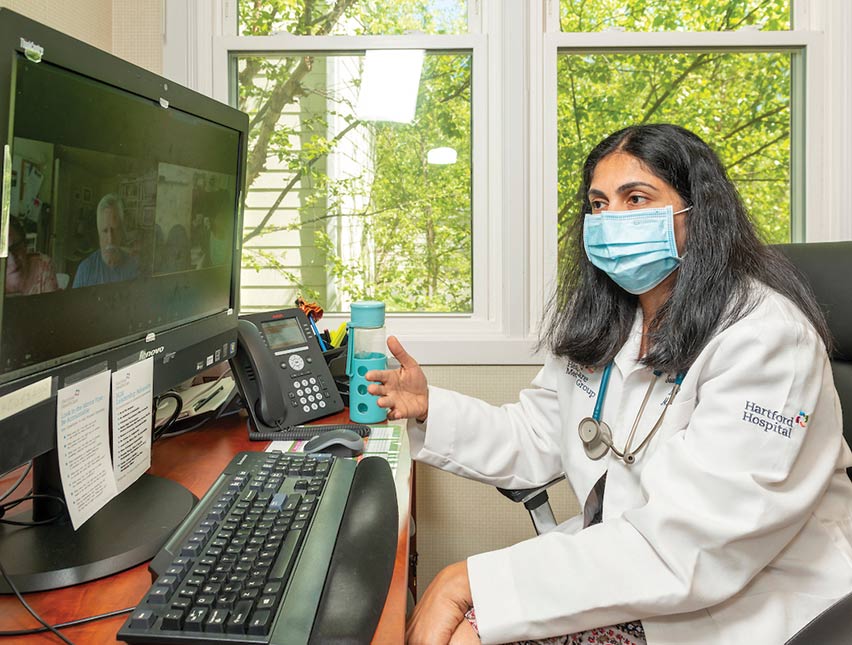
Photo by Chris Rakoczy: Sowmya Kurtakoti, MD, conducts a virtual wellness checkup via a telehealth video conference.
Commanding the system’s response
By Elissa Bass
As part of Hartford HealthCare’s response to the coronavirus pandemic, colleagues were redeployed to the Community Care Center (CCC) to take calls from a panicked public.
Clare Cryar, a Hartford Hospital clinical social worker, was designated a CCC lead manager when it opened March 6 with a mix of physicians, APRNs, latest COVID news, HHC policies and procedures, as they also fielded calls from system employees.
“We ended up doing triage, not just for COVID-19 but for things like heart attacks,” Cryar recalled. “People were panicked and paralyzed. The hotline was a place to turn.”
Of the hundreds of calls Cryar took, one stands out. A woman in her 20s called just before her shift was to end at 11 p.m.
“She had extreme shortness of breath, she was alone in her apartment, scared because she couldn’t breathe and scared to call 911 because she was afraid to go to an emergency department. I had a colleague call 911 while I stayed on the line with her to try and alleviate her panic and help her breathe,” she said.
Emergency personnel arrived and transported the caller to the hospital, where she was treated and sent home.
“My clinical background is crisis management,” nurses and others fielding questions around the clock about coronavirus, quarantine, risk and testing.
As Connecticut experienced its coronavirus surge through March and April, call volume also surged. “Staffing evolved from a few to 20 people on the phones,” Cryar explained.
“It just exploded. You couldn’t even hang up the phone and it would ring again. The public was panicked.” Staff made sure they were up to date on the Cryar said. “Working in the Center gave me a unique opportunity to grow professionally. Working in a grassroots setting like this lets you know that what you’re doing is making an impact on people. I made a difference in people’s lives.”
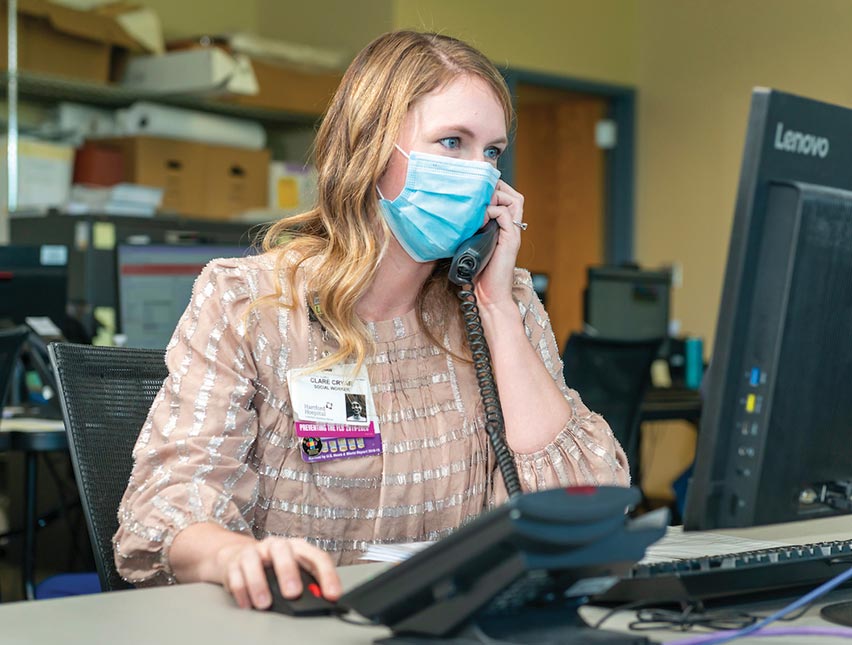
Photo by Chris Rakoczy: Clare Cryar was redeployed to work in the Call Center in Newington to help with the COVID-19 response efforts.
A nurse returns to care for COVID-19 patients
By Elissa Bass
Emily Lewis started her nursing career five years ago on Hartford Hospital’s High 12 at the bedside, but found a more relaxing pace at Connecticut Children’s Hospital where she transferred in July 2019 to work as an ambulatory float pool nurse.
She stayed in touch with her High 12 colleagues, however, and when the pandemic hit Connecticut, they asked her to come back. The 46 beds on High 12 were being converted to a COVID-19 unit, and they needed help.
“I love doing outpatient with the kids, but during the pandemic, I felt that this was just the right thing to do,” Lewis said. “I had the skills and it was the right place for me to be.”
As for the unit, she called it a “top-notch team,” and “among the best I’ve ever worked with.” “There was a tremendous ‘we’re all in this together’ attitude,” she said.
The highs and lows of treating COVID-19 patients were extreme. Lewis recalled starting one shift discharging a patient who had recovered, wheeling the person outside the hospital to be greeted by sobbing family members. She ended the same shift using an iPad so a dying patient could FaceTime with weeping family members and say goodbye.
“This has definitely reaffirmed for me what a unique privilege and honor it is to be a nurse,” Lewis said. “To be invited into these most intimate moments in people’s lives, to have them trust you — a stranger — with these moments, it’s an honor, and you always have to make good on that.”
Photo by Chris Rakoczy
The little things make the biggest impact
In her work as a retail supervisor for Compass One at Hartford Hospital, Tina Tromba realized early on in the COVID-19 pandemic that hospital colleagues needed more than breakfast, lunch and dinner.
As shortages of toilet paper, paper towels and disinfectant wipes made the news, she and food services management talked about what more they could. To help, they opened a “convenience store” in the cafeteria, selling paper goods, wipes, deli meats, milk, butter, cheese, eggs and other basics.
“We knew these things were hard to find,” said Tromba, who has worked at Hartford Hospital for 29 years. “We knew people were working long hours and, by the time they got to the grocery stores, they were either closed or wiped out. We knew we could provide this extra service.”
Meanwhile, Tromba identified another need based on her own experience wearing protective face masks for hours each day. The masks caused chafing, burning, blisters and rashes behind the ears. On Facebook, she saw that someone had knitted “mask extenders” to take pressure off the backs of ears.
“I can’t knit, so I bought some headbands and I cut them up and sewed buttons on each end so it takes the pressure off your ears,” she said.
This worked so well she made them for her staff. And then her grandchildren. And then neighbors. And then the gas station attendant who saw hers and said his ears were killing him, too. And then anyone who appeared in the hospital cafeteria asking for one.
Since the end of March, Tromba made and gave away more than 500 extenders. “This is my therapy,” she said. “After dinner, I watch some TV, and I make 20 or 30 extenders. I found something I can do for people, and it’s a stress reliever for me.”
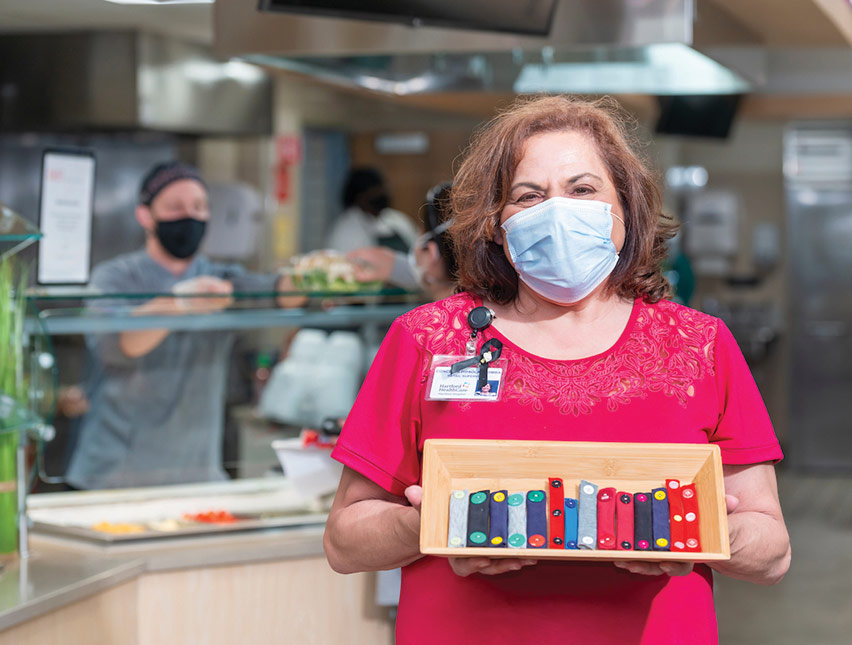
Photo by Chris Rakoczy: Tina Tromba, Retail Manager with Hartford Hospital’s food services, shows off “ear protectors” she makes and passes out to help staff reduce the discomfort of wearing face masks.
Bringing care where it’s needed most
By Ken Harrison
Nurses go where the patients are, especially in a crisis.
In an initiative lead by Jeffrey L. Cohen, MD, executive vice president and chief clinical operating officer for Hartford HealthCare, Hartford HealthCare at Home nurses were deployed to Stamford Hospital in May to help with a surge of COVID-19 patients.
The staff spent several weeks working alongside teams at Stamford Hospital, caring for patients on the hospital’s COVID-19 acute care floor and witnessing a marked improvement in the number of patients needing critical care services.
“After a week or two of adjustment, we have now made great friends on the unit (of) hardworking and dedicated professionals,” said Paulette Sementilli, manager of strategic partnerships for HHCAH and one of the nurses deployed. “I’m looking forward to returning to life at Hartford HealthCare, but I know that these new colleagues will be missed and I’m hoping that we keep in touch.”
“We cannot say thank you enough to the nurses who deployed to Stamford Hospital during these unprecedented times,” said Laurie St. John, vice president of Hartford HealthCare at Home. “The synergy and cultural alignment between our two organizations made for an exceptional, although challenging, experience for our colleagues and those at Stamford Hospital as they fought this terrible disease. We are grateful for their service and bravery.”
“I am so proud of our colleagues who stepped forward during such a challenging time and partnered with Stamford Health to meet the needs of our communities,” said Dr. Cohen. “In a time of crisis, it is incredibly reassuring to know we have a culture that fosters discretionary effort, teamwork and collaboration.”
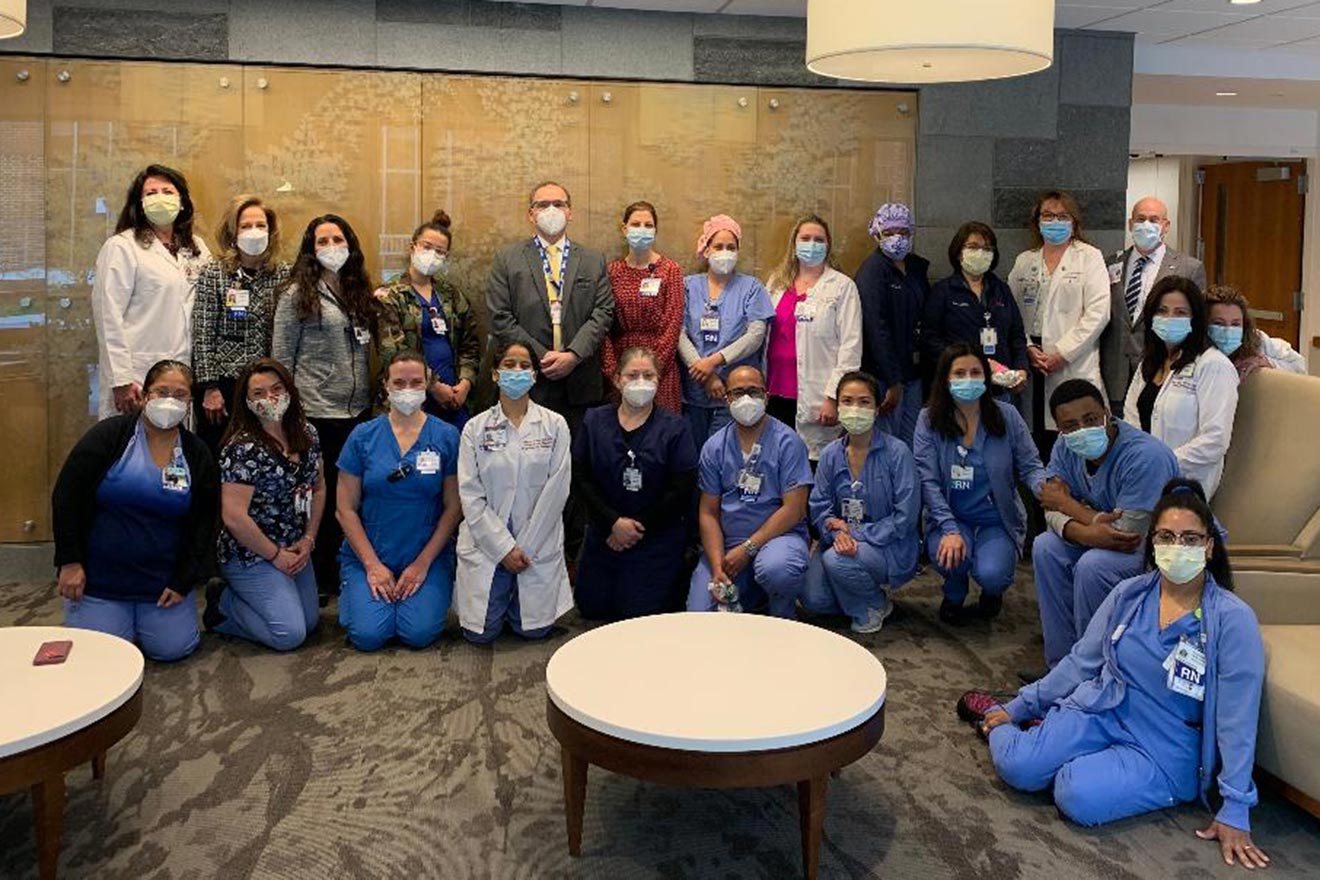
Submitted photo: The teams from Hartford HealthCare and Stamford Hospital came together in the fight against COVID-19.

